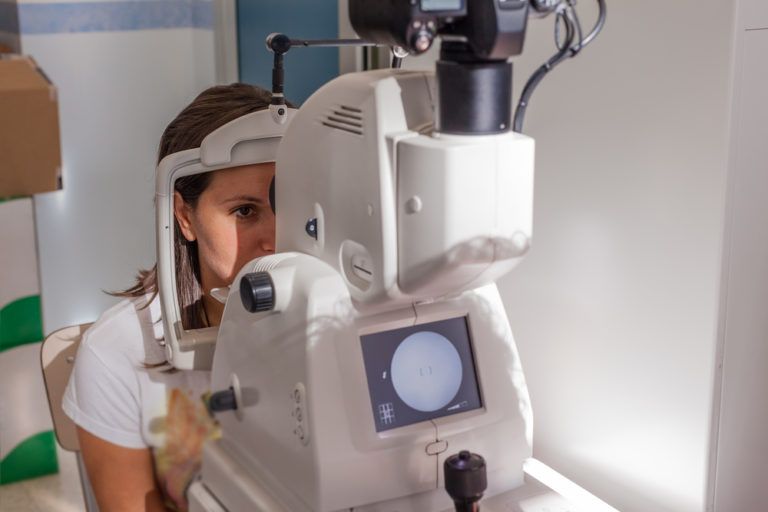Retina Exam

A retinal exam – also referred to as an ophthalmoscopy – is an in-office screening used to examine the back of your eye. Checking the retina is important because a simple examination can reveal the presence of a number of underlying conditions, including diabetes, retinal detachment, glaucoma, macular degeneration, and cancer. Early diagnosis of these disorders is important for minimizing the risk of vision loss and other health complications.
Did you know?
It is important that you share information about your health history with your eye doctor prior to your examination. This is especially true if you are visiting a new eye doctor or you have had changes in your health since your last screening. Bring a list of your medications and allergies, and be sure to discuss any recent or chronic illnesses you have had.
Frequently Asked Questions
Should I get a retinal exam?
You should have a retinal exam on a regular basis – preferably every year at your periodic eye check-up. Because retinal exams can reveal so many disorders and diseases, patients of all ages – including school-age children – should have a retinal exam each year.
What should I expect during my retinal exam?
Prior to your exam, your eye doctor will put drops in your eyes to dilate your pupils. He or she will then peer into the back of your eye using a special instrument called an ophthalmoscope. Through this device, your eye doctor will be able to view the blood vessels and tissues that surround the retina.
What happens after my retinal exam is over?
Following your exam, you may experience some vision blurring or sensitivity to light due to your dilated pupil. Side effects are only temporary, however, and you should be able to return to your normal routine soon after leaving the office. If your eye doctor finds anything unusual or abnormal during your retinal exam, you may need additional screenings.
